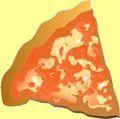
PERUGIA

Perugia was built atop a high hill, probably in the 9th century b.C., although the modern city spills over the edge on all sides. like most of the towns of umbria, it was fortified first by the etruscans, then by the romans, then by the lombards, and finally by the popes. each of the successive inhabitants of the city have left their traces.
the views from the edge of town are still beautiful.
on one side of the main square of perugia is the town hall, called the palazzo
dei priori, built in the 14th and 15th centuries. unlike other umbrian towns,
perugia remained allied to the popes through most of the middle ages, and this
building was created as the headquarters for the pope's representative. nowadays
it houses a museum--one that also allows you to see the elegant rooms inside.
a renaissance
mansion.
a medieval tower.
a modern post office, built in the
neo-gothic style.
one
of the medieval town gates.
part of a roman gate preserved in a wall.
in one of the churches of perugia,
this beautifully preserved sarcophagus, carved in the 4th century A.D.
from the 5th or 6th century,
the church of sant'angelo, built in a rare round style.
inside the church of sant'angelo,
it is easy to see that the 16 columns supporting the roof were reused from roman
buildings. All are different, with different capitals atop them, in different
materials and colors, and--as you can see here, of different heights.